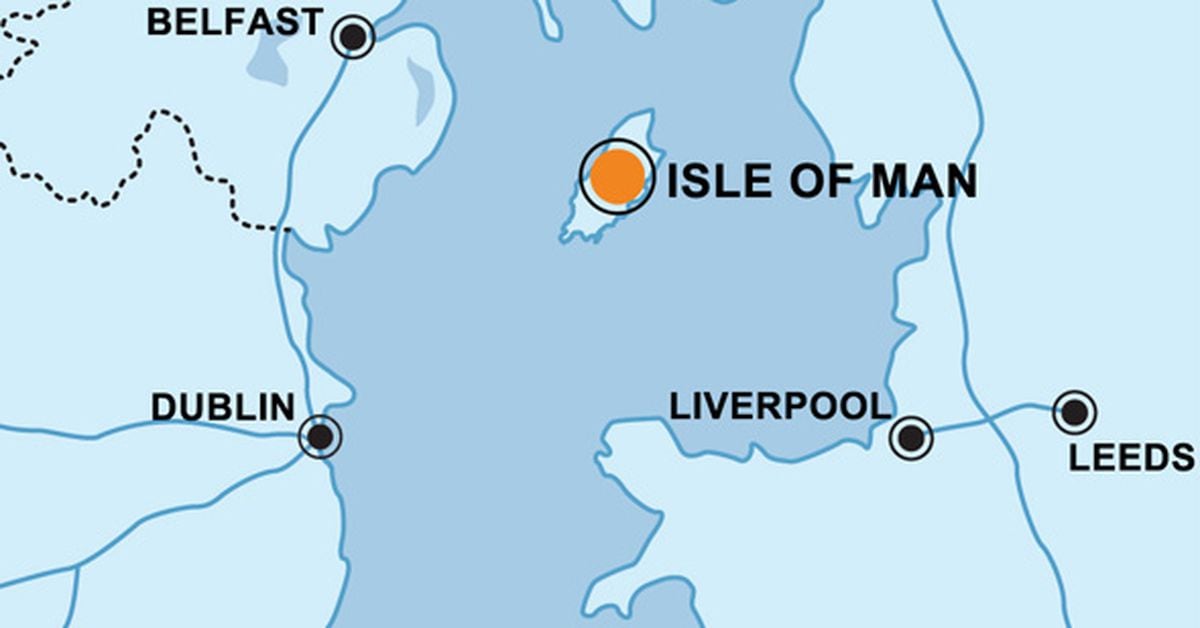The Victorian era marked the height of the Industrial Revolution, a period of immense technological advancement and industrialisation. The Laxey Wheel is a true monument to the era's industrial and engineering achievements, which revolutionised various industries, including mining.
The Laxey Wheel, also known as Lady Isabella, is a large waterwheel located in the village of Laxey on the Isle of Man, which is a self-governing British Crown Dependency in the Irish Sea. The Laxey Wheel is one of the most prominent tourist attractions on the island and is known for its historical and engineering significance. Least we forget the TT Races, but more on that, another day.
It means a great deal to me, as a proud daughter of a Manxman, and I always feel that my late Dad was a " Can Do " sort of person. He never shied away from something that was troublesome.
So here is my article about something that I believe is a great wonder of the Industrial Age, mankind's ability to solve unsolvable problems and follow on from Chaucer's article about water. How important it is and how we must never ever lose control of the most wonderful source of power in the world.
The Laxey Wheel was built in 1854 and served as a vital component of the Laxey Mines' pumping system. Its primary purpose was to pump water out of the mines, allowing miners to work at greater depths.
The wheel has a diameter of 72 feet (22 meters) and is one of the largest working waterwheels in the world. It was designed as an overshot waterwheel, meaning water flows over the top of the wheel to drive it.

Laxey is situated approximately 7 miles (11 kilometres) north of the island's capital and largest town, Douglas.
The wheel is powered by water from the Laxey River, which is channeled into a large reservoir above the wheel. From there, the water is released to flow over the wheel, causing it to turn.
The wheel is named "Lady Isabella" in honour of the wife of the island's then-lieutenant governor, Major G.H. Goldie, who was instrumental in the construction of the wheel.
The Laxey Wheel is the largest working waterwheel in the world. The wheel was used to pump water from the Glen Mooar part of the Great Laxey Mines industrial complex. The Triskelion is visible on the front of the wheel. The triskelion on the front of the wheel is backwards. This happened by accident when transferring the image onto the wall; they forgot to reverse it, so it is actually a mirror image of the symbol of Mann.
People may refer to the Laxey Wheel as "backwards" due to a unique feature in its design and operation. Unlike most waterwheels, where the water flows into the wheel from the bottom and exits at the top, the Laxey Wheel is an "overshot" waterwheel, which means the water flows over the top of the wheel to drive it. This design is somewhat unusual compared to the more common "undershot" and "breastshot" waterwheels.
In an "overshot" waterwheel like the Laxey Wheel, the water is delivered to the top of the wheel, filling the buckets or containers attached to the wheel's rim. The weight of the water in these buckets causes the wheel to turn, and as the wheel rotates, the water is emptied out as the buckets descend. This design allows for more efficient energy transfer from the flowing water to the wheel.
The term "backwards" might be used to describe this unique design because it appears to operate in a way that is counterintuitive when compared to the more common "undershot" or "breastshot" waterwheels where the water pushes on the bottom of the wheel to turn it.
While "backwards" may be a simplification or a playful way of describing the Laxey Wheel's design, it is, in fact, an innovative and efficient engineering solution that was well-suited to its intended purpose of pumping water from the mines of Laxey during its operational days. This unique design adds to the wheel's historical and engineering significance.

The Wheel features today on the reverse side of the £20 notes issued by the Isle of Man Government
In fact, it is considered an iconic symbol of the Isle of Man and its industrial heritage.
The Laxey Wheel is not only a testament to Victorian engineering but also a reminder of the important role it played in the island's mining history. So, how does it work?
-
Water Supply: The wheel is powered by water from the Laxey River, which is channeled into a large reservoir located uphill from the wheel. This reservoir was created to store a significant amount of water.
-
Gravity-Driven Flow: Water is released from the reservoir and flows through a system of channels or aqueducts. The design of these channels ensures that the water flows downhill, guided toward the wheel.
-
Overshot Wheel: The Laxey Wheel is an overshot waterwheel, which means the water flows over the top of the wheel to turn it. The wheel consists of a large wooden frame with a series of wooden buckets or containers attached to its rim. As the water flows over the top of the wheel, it fills these buckets.
-
Turning the Wheel: The weight of the water in the buckets causes the wheel to turn. Gravity is the driving force that rotates the wheel. As one side of the wheel becomes heavier with the water-filled buckets, that side descends, causing the wheel to turn. As the wheel rotates, the buckets on the lower side empty their water content.
-
Pumping Mechanism: Attached to the axle of the waterwheel is a system of gears and pumps. As the wheel turns, these gears transfer the rotational motion to a pump or series of pumps. These pumps were used to lift water from the mineshafts, where it was essential to remove water to allow mining operations to take place.
-
Water Removal: The pumps draw water from the mineshafts and then raise it to the surface, from where it is discharged into the river or nearby reservoir, completing the cycle.
The mining history of the Isle of Man is characterised by a legacy of various mineral extraction activities that have taken place over centuries. The island's geology and natural resources have contributed to its mining history, and several minerals have been mined there, including lead, zinc, copper, silver, and iron.
Mining activities on the Isle of Man can be traced back to ancient times, with evidence of mining operations dating to the Bronze Age.
Early inhabitants of the island mined for minerals like copper and bronze. The most significant phase of mining on the Isle of Man occurred during the 18th and 19th centuries when lead and zinc mining became the dominant industries. Mines were established in various locations, including Laxey, Foxdale, and Snaefell, among others.
Laxey, in particular, was a hub for mining activity. The Great Laxey Mine, also known as the "Old Snaefell Mine," was one of the island's largest mines and played a crucial role in the mining industry. The Laxey Wheel (Lady Isabella) was constructed to help pump water from the mines.
Copper was also mined on the Isle of Man. The Parys Mountain on the nearby Isle of Anglesey in Wales was a significant source of copper, and some Manx miners worked there. The mining industry on the Isle of Man began to decline in the mid-19th century due to factors such as depleting ore reserves, falling metal prices, and competition from other mining regions. Many mines closed during this period.
Despite the decline, remnants of the mining industry can still be seen on the island, including old mine workings, mine buildings, and the Laxey Wheel, which has been preserved as a historical attraction. The mining industry's legacy can be seen in the Isle of Man's cultural heritage and history. It played a significant role in shaping the island's economy and communities during its peak.
I wonder what we can learn from this Victorian era marvel?
The Laxey Wheel demonstrates how water can be used as an energy carrier. In the case of the wheel, water's potential energy, gained from its elevation in a reservoir, is converted into mechanical energy to pump water from the mines. Pumped hydro power systems also rely on the elevation of water in an upper reservoir to store energy and release it when needed. During periods of excess electricity generation, water is pumped from a lower reservoir to an upper reservoir, effectively storing energy. When electricity demand is high, the water is released from the upper reservoir through turbines to generate electricity. The Laxey Wheel, in a different context, used a similar principle of energy storage, albeit for a different purpose—storing energy in the form of potential energy in the water until it was needed to pump it out of the mines.
But will it work in a net zero environment here in Australia? Hmmm.....how about we leave the last word to Flysa, who proof read this piece for me.
The Laxey Wheel is a unique design which is of different design to the usual water turbines used in power generation.
However, at the end of the day, all depend on the Law of Conservation of Energy which states that energy can be neither created nor destroyed.
Because of gravity, water at a higher level possesses potential energy which turns into kinetic energy as it flows under the force of gravity.
Water turbines such as in the Snowy Mountains, turn the kinetic energy in the flowing water into mechanical energy which in turn drives generators which turn the mechanical energy into electrical energy.
In the Laxey Wheel, the mechanical energy generated was used to pump the water out of the mine. Nuclear generators are based on the enormous potential energy stored in the nuclei of atoms. Flysa
I suppose, from my point of view, all I can think of is Redhead's water tank that relies on gravity feed. I turn the tap on and water comes out.

I drink the water and I feel energised. If, however, I had to carry the water to the top of Redhead's tank and pour it in so that I could climb back down again and turn the tap on and get a drink, I wonder how efficient, energy wise that would be? I would be buggered.
It would have taken more energy to fill the tank than that I got back.

Snowy 2 seems a bit silly really, doesn't it?
Thanks to Paddy the Lad for the inspiration to write this article. Monty.
BLOG COMMENTS POWERED BY DISQUS


















































